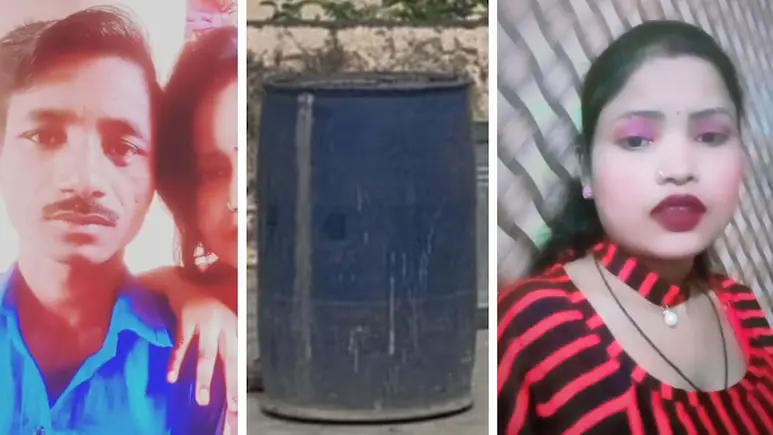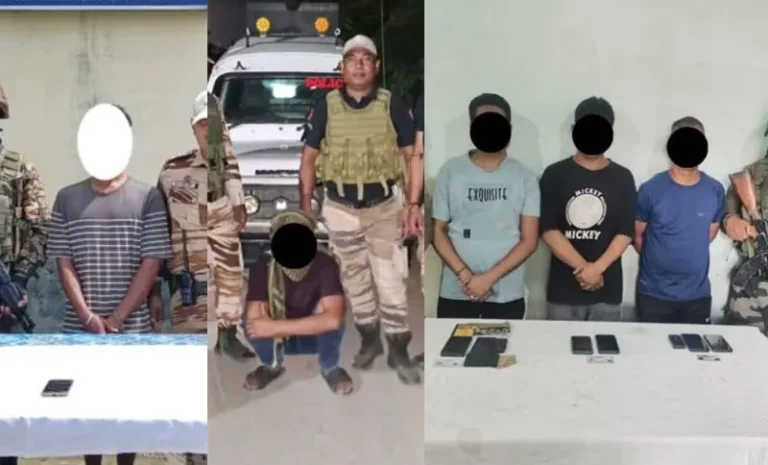“Saw Them Putting Papa’s Body In Drum”: Son Of Man Killed By Wife, Lover In Rajasthan’s Alwar
Short news summary
Police in Alwar district, Rajasthan uncovered the decomposing body of a man, Hansraj (also reported as Hansram), stuffed into a blue plastic drum inside a rented home. Investigators say the victim’s wife, Sunita, and the landlord’s son, Jitendra Sharma, are the prime accused. The couple allegedly smothered him, packed the body into the water-storage drum, sprinkled salt to hasten decomposition, and fled with the woman’s three children before being tracked down at a brick kiln roughly 50 km away. A heartbreaking twist: the 8-year-old son has emerged as a key eyewitness, telling reporters he saw the body being put in the drum. Police indicate the killing occurred on August 15, and the children are to be handed over to their paternal grandparents.
A case that shook a city: why this story pierced through the noise
True-crime stories crowd our feeds every day, so what made this one feel different? In a word: proximity. The victim wasn’t a name you’d recognize, nor a public figure. He was a worker at a brick kiln, renting a simple room with his family — an everyday life in an everyday neighborhood. When police lifted the lid on a blue drum in Alwar and found a decomposing body, the mundane turned macabre. We’re forced to confront that domestic violence, jealousy, and alcohol-fueled fights aren’t just “somewhere else” problems; they can be simmering behind the next door, in the lane you pass each day.
This isn’t a whodunit with shadowy strangers. It’s a family tragedy that allegedly escalated from a volatile home, a suspected extramarital relationship, and a chain of choices that ended in a killing and a desperate attempt to hide it — in the very drum used to store the household’s water. That detail, mundane yet shocking, is exactly the kind of image that stays with you.
The alleged sequence of events — piecing together the night
Let’s walk through the narrative investigators and local reporting have outlined so far:
- The home & the people: Hansraj (also referred in a related report as Hansram) was living in a rented rooftop room in Alwar’s Khairthal-Tijara area with his wife, Sunita, and their young children. The landlord’s son, Jitendra Sharma, is alleged to have been in a relationship with Sunita.
- The night: Accounts suggest the trio had been drinking. An argument reportedly spiraled. Police believe smothering with a pillow caused the death.
- The concealment: The body was allegedly placed into a blue water drum inside the house. Salt was sprinkled to speed decomposition — a grisly, misinformed attempt to erase evidence. Neighbors and the landlady eventually noticed a foul smell, which triggered the discovery.
- The flight: Sunita, her three children, and Jitendra left the house and were later detained at a brick kiln, roughly 50 km from the scene.
- A child’s testimony: The 8-year-old son has told reporters he saw his father’s body being put into the drum, describing that they emptied the water first, then moved the body.
- Aftermath: Police say the murder took place on August 15. The children will be handed over to paternal grandparents, a step that often follows when both parents are either deceased, absconding, or under arrest.
It’s important to stress the legal presumption: the accused are innocent until proven guilty in court. What we have is a working narrative that will be tested against forensics, call records, witness statements, and cross-examination.
The child witness: trauma, credibility, and care
The most haunting piece here is the 8-year-old son’s account. Child witnesses are not rare in domestic homicide investigations, but they require specialized handling. Why?
- Trauma-informed interviewing: Investigators must avoid leading questions and instead let the child narrate in their own words, at their own pace.
- Consistency over drama: Courts assess the internal consistency of the child’s recollection, corroboration with physical evidence, and the absence of coaching.
- Support systems: Post-incident, children need counseling, stable caregiving, and sometimes a separate guardian ad litem to protect their interests in proceedings.
In this case, the child’s specific detail — that water was emptied from the drum before the body was placed inside — is the kind of concrete memory that investigators can cross-check against the scene (wet floor, traces inside the drum, neighbors’ observations). As per local reporting, authorities intend to place the children with paternal grandparents, a typical interim arrangement while the legal process begins.
“Salt melts bodies”: myths vs forensic reality
Sprinkling salt on a corpse will not make it vanish. In fact, common table salt can desiccate tissues, possibly preserving some aspects (think of salt-cured foods), though the overall decomposition process continues based on temperature, humidity, bacteria, and insect activity. Forensic examiners know how to read these variables. The presence of salt may actually become a behavioral clue, pointing to an attempted cover-up rather than thwarting detection. Reports indicate salt was used here to speed up decomposition, which is a myth and often a giveaway of desperation rather than planning.
Rooftop rooms, brick kilns, and the socioeconomic frame
A rented rooftop room, a brick kiln job, and a family trying to make ends meet — this is the socioeconomic canvas on which the crime unfolded. Why does that matter?
- Hyper-proximity living: In dense neighborhoods, privacy is thin. Neighbors notice smells, noises, and visitors. That’s partly why the foul odor raised a red flag here.
- Precarity: When income is unstable and housing is rented, families may avoid police or community intervention during earlier abusive episodes, fearing eviction, job loss, or social stigma.
Forensic bread-crumbs: what investigators will likely examine
Although specifics will emerge in court, a case like this typically turns on:
- Cause of death: Smothering with a pillow is the working theory. Forensics will look for petechiae, airway obstruction signs, and struggle marks
- Time since death (TSD): Decomposition stage, ambient temperatures, and entomological evidence help estimate TSD. Salt applications, while messy, won’t erase these markers.
- Scene reconstruction: Water traces inside the drum, salt residues, any efforts to seal or tape the lid, and transfer evidence (fibers, sweat, prints).
- Digital & call data: Call records, location pings, and messages between the accused can reveal planning, conflict build-ups, or post-incident coordination.
- Behavioral evidence: Purchases (salt, drum, cleaning items), searches, or unusual late-night activity can indicate premeditation vs. impulsive violence.
Even when a case appears “open and shut” in the media, defense counsel will probe inconsistencies, challenge timelines, and scrutinize whether the child’s testimony was taken in a manner that withstands legal standards.
FAQs
Q1) Where did the incident occur and how was the body discovered?
A: The case is from Alwar district, Rajasthan. Neighbors and the landlady reportedly noticed a foul smell from a blue drum in a rented home; police opened it and found the decomposing body inside.
Q2) Who are the prime accused and what is the suspected motive?
A: Police say the victim’s wife, Sunita, and the landlord’s son, Jitendra Sharma, are the prime accused. Reports mention an alleged relationship between them and recurrent domestic conflict with the victim.
Q3) What do we know about the method and timeline of the killing?
A: Investigators suspect smothering with a pillow on or around August 15. The body was allegedly placed in a blue water drum and sprinkled with salt, after which the accused fled and were later detained at a brick kiln about 50 km away.
Q4) Why is the child’s account significant?
A: The 8-year-old son has described seeing the body being put into the drum after the water was emptied. Such specific, sensory details can be powerful if they align with forensic findings and are taken under proper child-interview protocols.
Q5) What happens to the children now?
A: Authorities have indicated the children will be handed over to their paternal grandparents while the legal process runs its course — a common interim measure to ensure stability and care.





